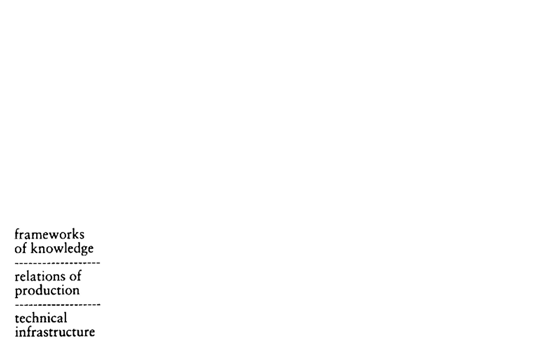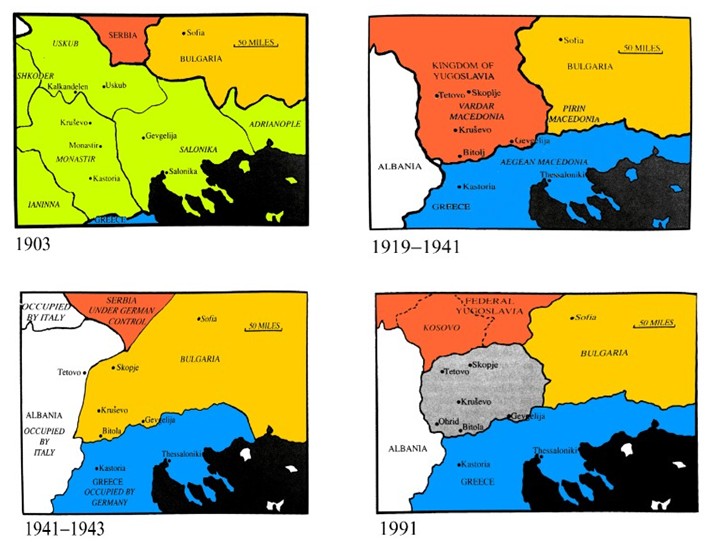
By James Neimeister
Words, like any signs, mean something. Not only do they allow us to string together thoughts, but they make an impact on the world. They structure what we see, as well as what we don’t.
Searchable online words, went the commonly held view, would usher in a new era wherein each person could be free to discover their “tribe” and form new communities of like-minded individuals. Signs, after all, are markers of identity, a way of waving “Hey!” to other people, to recognize tribes. But, bounding unpredictably across the planet, signs take on new meanings as they move from context to context, giving rise to unforeseen complications.
Sociologist Manuel Castells offers a powerful theory of how, in this aggressively connected age, the strange game of chance and destiny that unfolds as words take on lives of their own has only gotten stranger. Networked communications and the system that gave rise to them have unleashed new tribalisms, even as they have opened up a space for their mirror image: new solidarities.
—
So it was, improbably enough, that as the movement against police brutality continued here in the U.S., cries of “no justice, no peace” were among those heard when the small Balkan nation of Macedonia erupted in protest early this May.
Revelations that the government had some 20,000 people under illegal surveillance set the stage for unrest. Clashes between police and ethnic Albanians in the town of Kumanovo later in the month intensified things further. Mass protests would be met with mass counter-protests. But as much as this political struggle arose out of objective conditions, it was also about content – a culture war fought over words, names, images, and a PR push gone awry. That the immediate spark was provided by leaked information about surveillance and leaked phone calls between government ministers is not to be ignored either – talk about content making waves.
In power for the better part of a decade, Macedonia’s Prime Minister Nikola Gruevski and the right-wing VMRO-DPMNE party found their policy choices constrained. Though they espoused a pro-European, integrationist agenda, Greece had been blocking their pathway to EU accession, arguing that the name Macedonia, in fact, belonged to them. Since a humiliating 1995 deal brokered by the UN, Macedonia has had to refer to itself internationally as FYROM, the Former Yugoslav Republic of Macedonia. For a country that had been independent for all of four years, it was a tough blow to its nascent national identity.
Without so much as a proper name, Gruevski and co focused their efforts on what any cadre of authoritarian post-socialist satraps would: a grandiose construction project!
It made perfect sense at the time. It was the mid-2000s and the trade publications were filled with clauses like “…in this increasingly competitive global economy, the nation-state is becoming more and more irrelevant…” Countries, it was presumed, were suddenly on a level playing field with corporations. Or was it vice versa?
Take, for example, this wonderful and cartoonish illustration of free-marketeering:
Here we see a world of disembodied ticker tapes and graphs superimposed onto computer servers that fade over to a vision of skyscrapers as clouds cross above, the clouds like a less perfect rendition of the ticker feeds. As if to say: the digital now supersedes the physical; if you brand it, they will come.
—
So what was the newly-elected Prime Minister of a tiny country with few natural resources and an identity crisis to do? The obvious answer, circa 2007, was that it needed a “nation brand.” The idea’s most fervent proponent, public relations specialist Simon Anholt, coined the term as a way of relating to the public that he had published a yearly “Nation brands index” since 2005. Eventually, the idea took off. The Gruevski government, for its part, commissioned a study on “Nation branding and competitive advantage,” which, in turn, culminated in a 2010 plan to transform the Macedonian capital of Skopje by 2014.
The project was to be called Skopje 2014, like an Olympic bid without the Olympics but with the attendant displacement. In order to present as more “European,” columns were to be added to socialist-era structures and double-decker buses were to fill the streets. The project’s announcement coincided with the release of a dramatic six minute digital visualization of new churches, administrative buildings, statues, and triumphal arches:
Right away, Skopje 2014 angered each of Macedonia’s neighbors. The new statue on the city’s central square, for example, is officially referred to as “a warrior on a horse” – not Alexander the Great as intended – due to the ongoing controversy with Greece, which claims Alexander as one of their own. Bulgarians decried similar instances of “stealing” Bulgarian culture; Serbs, the theft of Serbian culture.
The city’s redesign was panned in headlines on CNN (‘a theme park’) and the Guardian (‘Europe’s new capital of kitsch’), with the Atlantic’s City Lab calling it “a strange quest to rewrite history.” Though, lending evidence to the truism that no publicity is ever bad, tourism has reportedly increased.
Domestically, the project elicited a complex reception. Many recognized right away that its style would be regarded as kitsch. Others worried about the cost – placing particular emphasis on anemic social services – or the largely monoethnic imaginary of Macedonian identity that it projected. As a result, the project also became a flashpoint for organizing, which, as the scholar Andrew Graan has laid out, rallied the government’s critics together in a way they had never been before.
Oddly enough, it gave them a language with which they could articulate their opposition: that of authenticity. To the perceived-as-inauthentic policy of “antiquization,” they “answered with cosmopolitanism;” to “alleged provincialism, with a recuperation of Skopje’s international history,” Graan writes. Why “cosmopolitanism” read to some Macedonians as more “authentic” than attempts to claim antiquity as their own is a matter of their country’s peculiar history.
—
At the end of the 19th century, Ottoman Macedonia was an ethnically, religiously, and linguistically diverse region inhabited by Turks, Albanians, Slavs, Greeks, Roma, Jews, smaller groups such as the Vlachs, and so on. But three newly established nation-states: Bulgaria, Serbia, and Greece, were struggling for control of the area. Their efforts were peaceful at first and largely directed through ecclesiastical soft power. Mob violence eventually broke out, followed by a series of wars, and waves of refugees left the area for their respective national homelands, further “balkanizing” Southeast Europe. Greece, Bulgaria, and Serbia divvied up most of what was left of the Ottoman Empire on the continent.
The territory of what is now Macedonia became part of Serbia and, during World War Two, was under Bulgarian control (the country’s Northwest, including Kumanovo, Tetovo, and modern Kosovo, was part of occupied Albania). But neither Bulgaria nor Serbia could fully assimilate the region’s Slavic inhabitants as their own. One history text refers to the region’ as “distinctively indistinct.” It’s not very dense, lying nestled in the mountains. Its neighbors all sought to swallow it, but found it difficult to govern.
(maps adapted from Keith Brown’s “The Past in Question”)
It wasn’t until after the war, when Macedonia became its own quasi-state within Yugoslavia, that Macedonian as either a language or a national identity would be codified. By then the region’s historical record had already been raked over by its neighbors for proof of their ancient birthright. A late-comer to the game of constructing narratives of national origin, its neighbors derided the Macedonian nation as an “invention” of Yugoslav leader Tito.
When Macedonians went to the polls to decide whether to declare independence in 1991, they did so largely in the belief that independence would prevent their country from getting mired in the bloodshed and rampant fanaticism that broke out elsewhere in Yugoslavia as the non-aligned Communist state fell apart. Those efforts succeeded. In 1992, the Yugoslav army under Slobodan Milosevic’s control withdrew.
—
Ethnic Macedonian partisans would nonetheless attempt to make up for lost time in the waning years of the Cold War and early 90’s, when ideological restraints on nationalism in the Yugoslav state waned. But the 1990s were a different era than the early modern Europe that gave birth to the nation-state, aided by the rise of print culture, capitalism, and the Reformation. Instead, the early 90’s were a time when English constituted the lingua franca in a global church of marketing and commerce. Newly-anointed capitalist elites across Eastern Europe would come to embrace this idiom with the zeal of converts.
At the same time, the return of numerous emigres from the diaspora brought with it a surge in fanatical rhetoric claiming that the Macedonians descended from the ancient Macedon of Philip and Alexander rather than 5th century Slavic tribes (also a narrative, to be sure!). Fending off Greek, Bulgarian, Serbian and Albanian counterclaims, antiquization situated Macedonia’s origins in the distant past and infuriated its neighbors. But these ideas would lie dormant until Gruevski’s election.
Antiquization held particular promise for the “center-right,” national-capitalist VMRO-DPMNE: to a hyper-competitive and fast moving global economy, it offered the tantalizing prospect of brand recognition. Early 20th century revolutionary Gotse Delchev may have been a stand-up guy, but Alexander the Great? Now there’s a national hero tourists might recognize!
Case in point, even the state-sponsored tourism campaign “Macedonia Timeless” associates Macedonia with “ancientness,” complete with snazzy, cuneiform-inspired typography:
The government failed to anticipate the danger of bringing these fringe views into the mainstream, however.
Among groups that were instrumental in articulating the “Ancient Macedonian” thesis, many had emerged in the early 90’s as part the ultranationalist far-right. An excellent post at Balkanist profiles one of them: founded in 1990, the World Macedonian Congress has long been one of the most stalwart proponents of antiquization. They believe that the Macedonians are so old that they are in fact “the progenitors of the white race.” With close ties to the VMRO-DPMNE party, the World Macedonian Congress has had free reign to air their eccentric views on state television.
Journalist Vladimir Petreski explained over email how the narrative of Macedonians’ ancient origins started to gain ground, at first unobtrusively, until it had slipped into history textbooks, was all over television, and then one day in the country’s main square. It was deliberately “smuggled” into the mainstream. But replacing the earlier narrative of the Macedonians’ 5th century Slavic roots – a narrative developed during Yugoslav times by state organs and educational institutions – with a defensive narrative advanced by shadowy, paranoiac groups fractured the delicate status quo kept since the aftermath of the country’s brief 2001 civil war.
—
That became abundantly clear about a year ago, when authorities arrested several Albanians over the murder of a group of ethnic Macedonian fishermen at a lake near Skopje. Albanians denounced the arrests as political and marched in the capital, while the government invoked the spectre of terrorism to justify its actions. In an atmosphere of heightened tension and economic stagnation, the mainstream political parties – the VMRO-DPMNE, the opposition Social Democrats, and the conservative Albanian parties that originally backed the Gruevski government – all suffered a collapse in credibility.
The implosion of mainstream political legitimacy allowed for a different evaluation of Macedonia’s past and present, however. In the aftermath of the government’s assault on the Albanian town of Kumanovo, the following speech went viral online, garnering some 400,000 views and over 10,000 shares on Facebook in a matter of hours. In it, an Albanian Kumanovo resident calls for unity and, more significantly, accountability:
“If we speak about terrorism and nationalism,” he says, “these are constructed things.” He hints at suspicions that the alleged “terrorists” may have been innocent (in a recent poll, almost half of respondents implied the same, another third refused to answer) and argues that hunger, poverty, and unemployment are more pressing issues for the country. Where a cosmopolitan outlook united opponents of the Skopje 2014 project, the protest movement that coalesced this May has transcended ethnic and even national divisions in demanding solutions to the country’s social crisis.
As Andrew Graan explained via email, the anti-austerity debate in Europe has had a strong influence on the Macedonian protesters, highlighting the role of left-wing groups like Solidarnost in articulating a platform and demands. Though their country has been an EU candidate since 2005 and most Macedonians want to be a part of Europe, the continued obstacles their country has faced in EU accession and Europe’s tolerance for its corrupt, authoritarian government has left them feeling put out. To that end, Solidarnost and other groups have marched in solidarity with Greece (despite their countries’ rivalry), with the refugees pouring into the country to escape wars in North Africa, Afghanistan, and the Levant hoping to reach Europe, and some have taken a stance against the EU brokered deal that will allow the Gruevski government to remain in power until January of next year. The political establishment’s implosion has opened a space for people to make radical demands.
—
These events occurred in a context wherein global, networked communications systems often appear to be the last refuge of agency or even national sovereignty. And what a meager refuge at that.
Esoteric, fringe views became normalized and rationalized as part of the Macedonian government’s new nation-branding initiative; in a world of superlative “Superbrands,” the assertion that “We are the oldest! And the biggest! And the strongest!” was justifiable from a purely market-driven perspective. Yet, the Gruevski government never thought through the consequences of reopening age-old debates over identity. They also blatantly ignored the actual needs of the people.
In response, Macedonians found themselves united in their differences. Note how in the video from Kumanovo, the two residents identify themselves: one as Albanian, the other as Macedonian, and embrace. Solidarnost among other groups organizes along with LGBT organizations and environmentalists. The work that went into uniting these social movements occurred over years, took influence from similar struggles in Europe, and drew from the country’s recent past of having avoided violence in the immediate aftermath of Yugoslavia’s collapse. The protests were self-consciously multilingual and multicultural, as internationally-oriented blogs written in English to document the uprising take great care to point out. Their organization as such and careful choice of imagery (a rally commemorating the dead in Kumanovo paid reverence to WWII partisans, for example) represents nothing less than an attempt to perform and embody a new narrative of inclusive national unity.
This, too, was an identity-driven movement, rooted in local pockets of resistance, brought together in opposition to forces beyond their control – the EU and the markets as much as the government.
Their success or failure will largely be determined by still other forces beyond their control, such as whether similar coalitions assemble abroad. But the same fundamental dynamics – the sovereignty of markets superseding that of people, culture wars fought over crude reappropriations of the past – have driven intense polarization and much-maligned “identity politics” the world over. The political center is crumbling, worldwide. That questions of identity have come to the fore should come as no surprise; loss of control in a climate of rampant individualism have facilitated their primacy. If becoming a subject and reclaiming agency today means giving yourself over to the collective, then at least there are a wide variety of group identities to engage with! (hello Tumblr!)
Further jolts to the system – say, environmental degradation and market volatility – will exacerbate these tendencies, but at least they put our choices into stark relief: either retreat into totemic politics of fear as competition over scarce resources heats up, or rally around communities in resistance and challenge a system that is sure to bleach the oceans, turn pastures to deserts, and deserts to glass.
That pretty much covers the available options!



